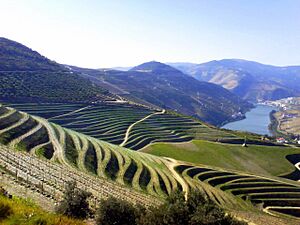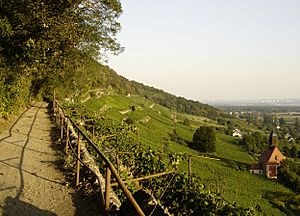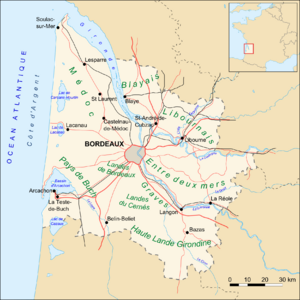Climate categories in viticulture facts for kids
The climate of a place where grapes are grown is super important! It's how we figure out what kind of grapes will grow best there. Experts look at the weather patterns during the growing season (when grapes are actively growing). Most wine regions fit into one of three main climate types: Mediterranean, maritime (meaning near the sea), or continental (meaning inland).
Most of the world's best wines come from places between 30 and 50 degrees latitude, both north and south of the equator. That's because these areas usually have the right balance of sun, heat, and water for grapes. While some grapes grow in tropical places, most high-quality wine comes from these three main climate types.
Contents
How Climate Affects Grape Growing

Climate doesn't just decide if grapes can grow in an area. It also influences what types of grapes will thrive and how farmers need to care for their vines. Grapes need enough sunshine, warmth, and water to grow well. After the grapes are picked, the vines go into a resting period called dormancy. They save their energy for the next year's growth.
Grapevines generally do best in mild climates. They need long, warm periods when their flowers bloom, fruits start to form, and grapes ripen. Grapes usually start growing when temperatures reach about 10°C (50°F). Below this, the vines are mostly sleeping. If it gets too cold, like freezing at 0°C (32°F), the vines can get hurt by frost.
When the average daily temperature is between 17°C and 20°C (63-68°F), the vines start to flower. As temperatures climb to about 27°C (80°F), many parts of the vine are working hard, and the grape bunches begin to ripen. Different climate types have these ideal temperatures for different lengths of time during the growing season.
Rainfall is another key factor. Grapes need about 710 mm (28 inches) of water during the growing season. Sometimes, natural rain isn't enough, so farmers have to add water using irrigation systems. Mediterranean and continental climates can be very dry, needing extra water. Maritime climates, however, often get too much rain, which can cause problems for the grapes.
Other weather factors like wind, humidity, air pressure, and how much the temperature changes between day and night (called diurnal temperature variations) also play a big role in how grapes grow in a region.
Mediterranean Climates


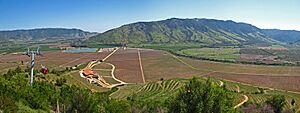

Wine regions with Mediterranean climates have long growing seasons with mild to warm temperatures. The weather doesn't change much throughout the year. Winters are usually warmer than in maritime or continental climates. During the grape growing season, there's very little rain. Most of the rain falls in the winter months. This means there's a higher risk of drought, and farmers often need to irrigate their vineyards.
The Mediterranean climate is common around the Mediterranean Sea. This is where grape growing and winemaking first became popular a long, long time ago, thanks to ancient civilizations like the Phoenicians, Greeks, and Romans.
Places with Mediterranean Climates
- Tuscany and many other Central-Southern Italian wine regions
- Most Greek wine regions
- Languedoc and Roussillon in France
- Southern Rhone Valley in France
- Most Portuguese wine regions
- Napa Valley and other coastal California wine regions
- Western Australia and South Australian wine regions
- Chilean Central Valley
- Western coastal South African wine regions
- Many coastal Turkish wine regions
Continental Climates
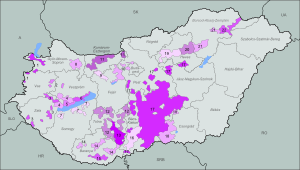
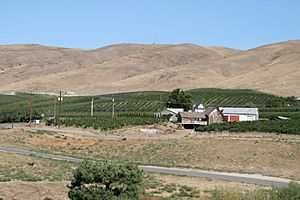

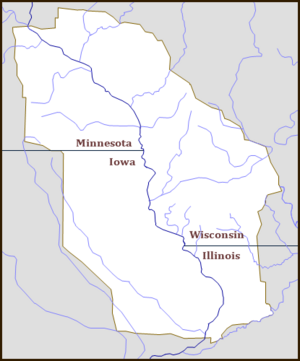

Wine regions with continental climates have very clear seasonal changes. Summers are hot, and winters are cold enough for snow and ice. These regions are often found far inland, away from large bodies of water that could make temperatures milder.
Continental climates often have big temperature swings between day and night. Days can be very warm, but nights get much cooler. In winter and early spring, frost and hail can be dangerous for the vines. Depending on the specific area, irrigation might be needed to make up for less rainfall. These strong weather changes often mean that the quality of wine can vary a lot from year to year in continental climates, like in Burgundy.
There are more continental wine regions in the Northern Hemisphere. This is partly because continents in the Southern Hemisphere are smaller and closer to the big oceans, which makes their climates milder. Some wine regions, like parts of Spain, have a mix of continental and Mediterranean features because they are high up or far from the sea. They have distinct seasons but still enjoy a long, dry summer growing season.
Places with Continental Climates
- Burgundy in France
- Rioja in Spain
- Italian Piedmont and most other Northern Italian wine regions
- Most Austrian wine regions
- Most Hungarian wine regions
- Most Romanian wine regions
- Most Canadian wine regions (like Okanagan Valley)
- Mendoza in Argentina
- Columbia Valley in Washington State and Oregon
- Finger Lakes, NY
- Upper Mississippi River Valley AVA in the US Midwest
- Xinjiang wine regions in China
Maritime Climates


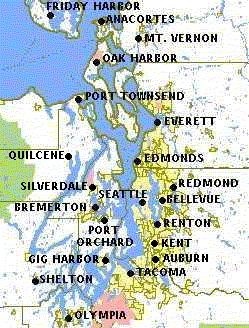

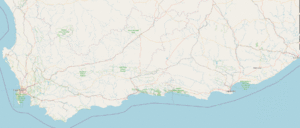
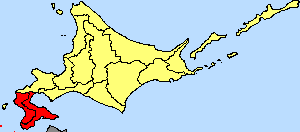
Wine regions with maritime climates are found close to large bodies of water like oceans, estuaries, or inland seas. These waters help keep temperatures mild. Maritime climates are a bit like a mix of Mediterranean and continental climates.
Like Mediterranean climates, maritime regions have a long growing season, and ocean currents help keep temperatures steady. However, unlike dry Mediterranean climates, maritime regions often get a lot of rain and humidity. This can lead to problems for grapes, like mold and mildew. Like continental climates, maritime regions have distinct seasons, but the changes are usually not as extreme. Summers are warm, not hot, and winters are cool, not freezing cold. Maritime climates can also be found in some higher areas in subtropical and tropical places, like the southern Appalachian Mountains in the United States.
Places with Maritime Climates
- Bordeaux in France
- Champagne in France
- Most German wine regions
- New Zealand wine regions
- Willamette Valley in Oregon
- Tasmania in Australia
- Vancouver Island wine regions in British Columbia, Canada
- England and Wales
- Pico, Azores, Portugal
|


